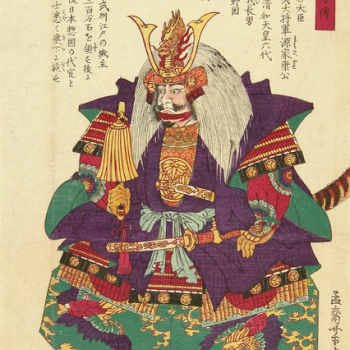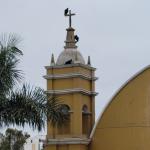The short list of Popes Who Resigned has only three names. These are the late Pope Emeritus Benedict XVI who resigned in 2013; Pope Gregory XII, who resigned in 1415; and Pope Celestine V, also known as Saint Peter Celestine or Saint Peter Morrone, who resigned in 1294. And if we compiled a list of popes whose resignations were entirely voluntary, there would be only two names, Benedict’s and Celestine’s. The story of Pope Celestine V is a poignant one shrouded in legends and at least one conspiracy theory.
Pietro Angelerio, the future Pope Celestine V, was born in Italy about 1221. He became a Benedictine monk at age 17 and eventually was ordained a priest. And then he began a life of austerity and seclusion modeled after the life of John the Baptist. For a time he lived in a cave in Mount Morrone, in the Abruzzo region of central Italy, earning him the name Pietro del Morrone, or Peter of Morrone. His was a life of prayer, fasting, and work. He was said to wear a rough horse-hair shirt and a chain of iron around his waist, and he slept on the ground with a log for a pillow.
Eventually word of the solitary monk on the mountain spread, and other men were inspired to gather around him. From this Peter of Morrone founded an order of Benedictine monks in 1254 that later would be called the Celestine Order. The order was confirmed by Pope Urban IV in 1264.
From Hermit to Pope Celestine V
After Pope Nicholas IV died in 1292, the election of the next pope was stymied by deadlock. For two years the cardinals could not come to a decision. At some point they started thinking outside the box. By then Peter of Morrone was widely respected for his saintliness. Here was someone uncorrupted and free from worldly and political entanglements. Author Eamon Duffy (Saints and Sinners: A History of the Popes, Yale University Press, 2015) wrote of Peter of Morrone, “His election fed apocalyptic hopes of a Papa Angelicus, a holy and unworldly pope who would cleanse the Church and prepare the world for the advent of Christ.”
The old hermit objected to the election and told the cardinals he was a bad fit for the job. When the cardinals appeared determined to inaugurate him anyway, it’s said he tried to flee, but was intercepted. He was inaugurated on July 5, 1294 and took the name Pope Celestine V. According to legend he wore the ornate papal vestments over his old monastic habit, hair shirt and all.
By all accounts Pope Celestine V was utterly out of his depth in the papacy. The life of austerity, prayer, fasting, and menial work didn’t prepare him to be the administrator of anything as big and complex as the Catholic Church. His decisions were unpopular, and he clearly was unhappy. He tried to replicate his hermit’s life in the papal palace by living in a simple wooden cell within his apartments. He observed Advent in isolation and was robustly criticized for neglecting his duties. Chaos reigned. He verified with one of his cardinals, Benedetto Caetani, who was a canon lawyer that a pope could resign. Then Pope Celestine V issued a decree declaring popes could resign, and he resigned on December 13, 1294. He was pope for 161 days.
The Sad End of Pope Celestine V
The former Pope Celestine V wanted nothing more than to go back to his simple life. But the next pope would not allow it. Celestine V’s successor was Cardinal Benedetto Caetani — the same canon lawyer who had helped him resign — who became Pope Boniface VIII. Rumors were swirling that Boniface VIII had forced Celestine V out of office, and that Celestine V was still the true pope. Boniface VIII decided to clarify matters by imprisoning the retired Celestine V.
The former pope evaded capture for several months, hiding in the forests and mountains. He was well into his 70s at this point, so that can’t have been easy. Then he got on a ship bound for Greece, but a storm brought the ship back to port. And then the former Pope Celestine V was captured. Boniface VIII kept his predecessor in the papal palace for a time, and then sent him to live in a tiny stone cell guarded by soldiers in the Citadel/Prison of Fumone. His caretakers were restricted in how much they could care for him. It’s said the soldiers treated the old hermit with contempt, which he returned with kindness. “I desired nothing in the world but a cell; and a cell they have given me,” he said. Celestine V died on May 19, 1296, at the age of 75, after ten months in Fumone. He and was buried at a church in Ferentino, a small community about 40 miles (65 km) southwest of Rome.
Immediately it was suspected that Pope Boniface VIII had Celestine V murdered. To this day Boniface VIII is not remembered with anything approximating fondness. But soon Boniface had bigger problems than being a murder suspect, namely King Philip IV of France. The two men first clashed over tax polices, but over time it came to a showdown over the Church’s claim of supremacy over all temporal powers, such as kings of France. This all came to a head when forces aligned with Philip captured the Pope and held him prisoner for two or three days. Then some of the captors had a change of heart, and Pope Boniface VIII was released. He died of injuries shortly after, in October 1303,
From Pope Celestine V to Saint Peter Celestine
Pope Boniface VIII was succeeded by Pope Benedict XI, who died the following year. Next came Pope Clement V. One of Pope Clement V’s priorities was to make peace between the Church and King Philip IV. And one of Philip’s many conditions for reconciliation was the canonization Pope Celestine V. The King wanted Celestine V canonized as a martyr, which assumed he had been murdered. Pope Clement V canonized the late former pope under the name Peter instead of Celestine and as a “confessor,” not a “martyr.” But canonized the old hermit was. Most Church sources I consulted call him Saint Peter Celestine. He is the patron saint of papal resignations.
The story is not over. In 1327 Saint Peter Celestine’s remains were moved to the Basilica of Santa Maria di Collemaggio in L’Aquila. At some point the remains were dressed in papal regalia, which the old hermit would have hated, and placed in a splendid glass coffin with a wax mask over the skull. Those handling the remains found a hole in the skull that they imagined might have been evidence of a cause of death. Did Pope Boniface VIII have a nail driven into his predecessor’s head?
The Further Adventures of Pope Celestine V
Pope and Saint Celestine’s remains were stolen in 1988, but they were quickly found and returned.
The Basilica of Santa Maria di Collemaggio was badly damaged in an earthquake in 2009, but the glass casket remained intact. In April 2009 Pope Benedict XVI inspected the basilica and paused before the glass casket. Without explanation Pope Benedict XVI removed his pallium, one of his vestments, and laid it on the casket. This was the pallium Benedict had worn for his inauguration as pope, so it must have had some significance for him. Pope Benedict XVI resigned from the papacy in 2013.
Also in 2013 it was decided the wax mask needed to be replaced with a silver one. The skull was used to replicate the saint’s face. A pathologist who examined the skull declared that the famous hole was not the cause of death but was made post-mortem. Today the saint’s remains rest in the glass casket with a new silver mask and Pope Benedict XVI’s pallium. And every time Pope Francis makes a visit to the Basilica of Santa Maria di Collemaggio, rumors spread that he’s about to resign.














